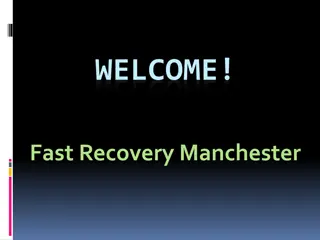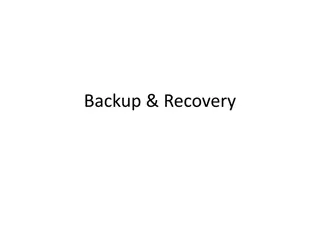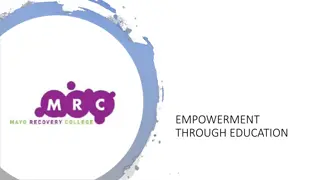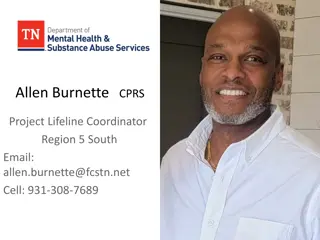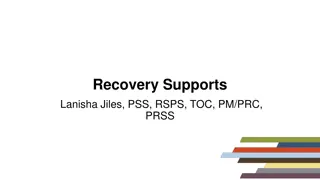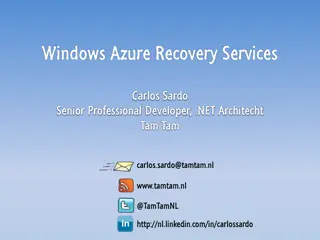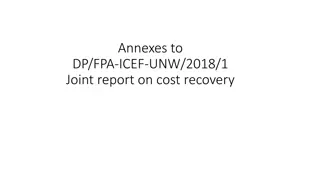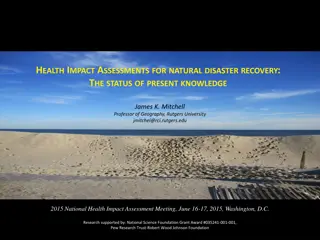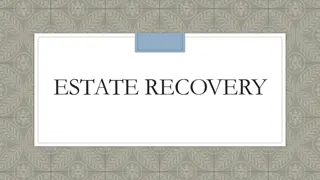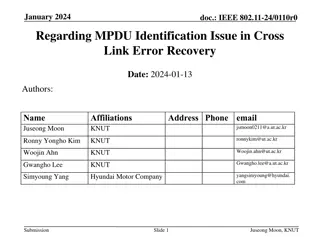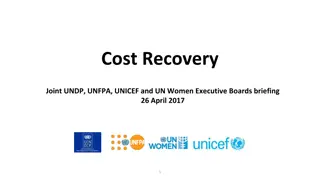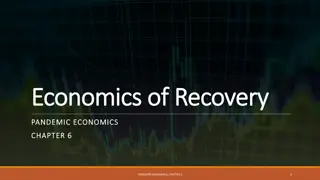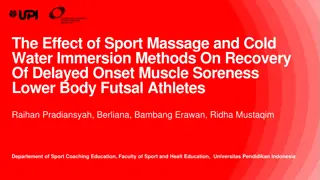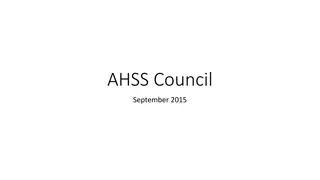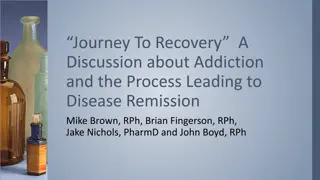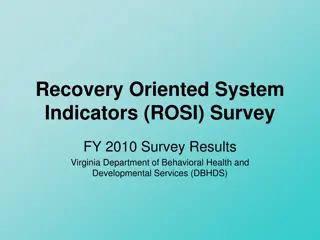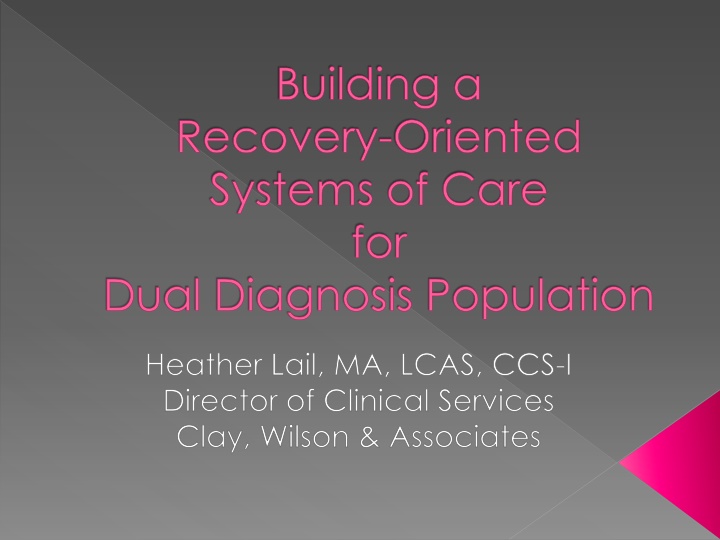
Co-occurrence of Mental Health and Substance Use Disorders
High prevalence of co-morbidity between mental illnesses and substance use disorders presents challenges in identifying causality. Factors such as genetic vulnerabilities and brain regions play a role in overlapping risks. Learn more about the correlation and common factors influencing both conditions.
Download Presentation

Please find below an Image/Link to download the presentation.
The content on the website is provided AS IS for your information and personal use only. It may not be sold, licensed, or shared on other websites without obtaining consent from the author. If you encounter any issues during the download, it is possible that the publisher has removed the file from their server.
You are allowed to download the files provided on this website for personal or commercial use, subject to the condition that they are used lawfully. All files are the property of their respective owners.
The content on the website is provided AS IS for your information and personal use only. It may not be sold, licensed, or shared on other websites without obtaining consent from the author.
E N D
Presentation Transcript
Building a Recovery-Oriented Systems of Care for Dual Diagnosis Population Heather Lail, MA, LCAS, CCS-I Director of Clinical Services Clay, Wilson & Associates
Mental Health and Substance Use Disorder Correlation High prevalence of co-morbidity between substance use disorders and other mental illnesses does not mean that one caused the other Establishing causality or directionality is difficult due to Diagnosis of a mental disorder may not occur until symptoms have progressed to a specified level subclinical symptoms may also prompt drug use, and imperfect recollections of when drug use or abuse started can create confusion as to which came first.
Drugs of abuse can cause abusers to experience one or more symptoms of another mental illness. The increased risk of psychosis in some marijuana abusers has been offered as evidence for this possibility. Mental illnesses can lead to drug abuse. Individuals with overt, mild, or even subclinical mental disorders may abuse drugs as a form of self-medication Both drug use disorders and other mental illnesses are caused by overlapping factors such as underlying brain deficits, genetic vulnerabilities, and/or early exposure to stress or trauma.
Common Factors of Mental Health and Substance Use Disorders Overlapping Genetic Vulnerabilities A particularly active area of co-morbidity research involves the search for genes that might predispose individuals to develop both addiction and other mental illnesses, or to have a greater risk of a second disorder occurring after the first appears. Estimated 40-60 percent of an individual's vulnerability to addiction is attributable to genetics. Most vulnerability arises from complex interactions among multiple genes and from genetic interactions with environmental influences. Genes can also act indirectly by altering how an individual responds to stress or by increasing the likelihood of risk-taking and novelty-seeking behaviors, which could influence the development of drug use disorders and other mental illnesses. Several regions of the human genome have been linked to increased risk of both drug use disorders and mental illness, including associations with greater vulnerability to adolescent drug dependence and conduct disorders.
Involvement of Similar Brain Regions Some areas of the brain are affected by both drug use disorders and other mental illnesses. Example, the circuits in the brain that use the neurotransmitter dopamine are typically affected by addictive substances and may also be involved in depression, schizophrenia, and other psychiatric disorders. Some antidepressants and essentially all antipsychotic medications directly target the regulation of dopamine in this system, whereas others may have indirect effects. Dopamine pathways have also been implicated in the way in which stress can increase vulnerability to drug addiction. Stress is also a known risk factor for a range of mental disorders and therefore provides one likely common neurobiological link between the disease processes of addiction and those of other mental disorders. The overlap of brain areas involved in both drug use disorders and other mental illnesses suggests that brain changes stemming from one may affect the other. Example, drug abuse that precedes the first symptoms of a mental illness may produce changes in brain structure and function that kindle an underlying propensity to develop that mental illness. If the mental disorder develops first, associated changes in brain activity may increase the vulnerability to abusing substances by enhancing their positive effects, reducing awareness of their negative effects, or alleviating the unpleasant effects associated with the mental disorder or the medication used to treat it.
Dual Diagnosis Commonality Estimated one-third of all people experiencing mental illnesses and about half of people living with severe mental illnesses also experience substance abuse. These statistics are mirrored in the substance abuse community, where about a third of all alcohol abusers and more than half of all drug abusers report experiencing a mental illness. Men are more likely to develop a co-occurring disorder than women. Other people who have a particularly high risk of dual diagnosis include individuals of lower socioeconomic status, military veterans and people with more general medical illnesses.
Area Mental Health and Substance Use Providers Burke Recovery: Morganton, NC Substance Abuse Assessment; Outpatient Treatment; Adolescent, Adult & Family Services The Cognitive Connection: Morganton, NC Substance Abuse Assessment; Outpatient Treatment, Suboxone Treatment, DWI Services Archway Counseling: Morganton, NC Substance Abuse Assessment; Outpatient Treatment
Catawba Valley Behavioral Healthcare: Morganton, NC Mental Health Counseling, Psychiatric Medication FOCUS Behavioral Health Services: Morganton, NC Mental Health Counseling A Caring Alternative: Morganton, NC Mental Health Counseling
Christ Centered Recovery Program: Morganton, NC Mental Health Counseling; Substance Abuse Services Mimosa Christian Counseling Center: Morganton, NC Mental Health Counseling One Love Services: Morganton, NC Outpatient Therapy, Clinical Assessments, In-home services
Crossroads Counseling Center Hickory, NC Mental Health Counseling Catawba Valley Behavioral Healthcare Hickory, NC Mental Health Counseling, Psychiatric Medication
Gaps in services regarding Dual Diagnosis population Identified Gaps in Service 1. Communication related to the availability of outpatient services and appointment timeliness. 2. The availability of bilingual outpatient services. 3. Inpatient psychiatric bed availability for adolescents. 4. Access to opioid services. 5. Access to comprehensive substance abuse outpatient treatment programs.
6. Mental Health and substance use fields have different historical roots and traditions 7. Differences lead to two distinct groups of practitioners who have little to do with other specialty 8. Mental Health providers are not readily trained to identify signs of substance use 9. Substance Use providers are not readily trained to identify psychiatric symptoms. 10. Lack of LPCs and LCASs.
Identified Needs 1. Assess to providers 2. Examine true cost of care by examining gaps in funding 3. Further examination of the Mental Health and Substance Use continuum of care 4. More licensed mental health and substance use clinicians 5. Dually trained clinicians 6. Easier access to simultaneous Mental Health and Substance Use providers for consumers
Recovery-Oriented Systems of Care A ROSC is a coordinated network of community-based services and supports that is person-centered and builds on the strengths and resilience of individuals, families, and communities to achieve abstinence and improved health, wellness, and quality of-life for those with or at risk of alcohol and drug problems.
Values Underlying a ROSC Person-centered approach: Centered around the needs, preferences and strengths of individuals. There are many pathways to recovery such as treatment, mutual aid groups and faith-based recovery. ROSC offers flexibility and supports that are designed to meet each individual s specific needs. Self-directed approach: Exercising the greatest level of choice over their service and support options and responsibility for their recovery. Strength-based approach: Identifying and building upon the assets, strengths, resources, and resiliencies of the individual, rather than the needs, deficits and pathologies. Participation of family members, caregivers, significant others, friends, and the community: Acknowledging the role that others play in the recovery process. These individuals are incorporated in recovery planning and recovery support.
Operational Elements of a ROSC Collaborative decision-making: By empowering individuals to make their own decisions regarding their care. This helps individuals to direct their own recovery to the greatest extent possible. Individualized and comprehensive services and supports: Offering a variety of supports to meet the needs to the individuals, the services are designed to support an individual s recovery across the lifespan. Services and supports are to be gender-specific, culturally relevant, trauma-focused, and appropriate to the person s stage of life and stage of recovery. Community-based services and supports: Offering a wide array of services and supports that draw upon the strengths, resilience, and services of the community. Continuity of services and supports: Coordinating services and supports to ensure ongoing connections among various organizations for as long as the individual needs them.
Multiple stakeholder involvement: A ROSC involves all segments of the community including treatment and recovery professionals, policy-makers, administrators, people in recovery, family members, representatives from allied health and social service agencies, community leaders, and others with concern for substance use disorder recovery. It promotes trust and transparency in the design and delivery of services and supports. Recovery community/peer involvement: A ROSC includes members of the recovery community in the design of systems, services, and supports. People in recovery have a meaningful role in service design, provision, and quality improvement. Peer-to-peer recovery support services are also included. Outcomes-driven: A ROSC measures outcomes to improve the systems of care.
ROSC Practice Guidelines Consumer and Family-Driven Requires people in recovery be involved in all aspects and phases of the care delivery process, from the initial framing of questions, the delivery and ongoing monitoring of care, and development of new services and supports. Person-centered care is not by itself sufficient Changes are required at the system level to make sure the right types of services and supports are available to be included in individualized recovery plans
Timely and Responsive Optimal to foster wellness, enhance protective factors, and promote healthy living Access to care involves facilitating swift and uncomplicated entry into care Engagement into services involves making contact with the person rather than the diagnosis, building trust over time, attending to stated needs, providing a range of services Timeliness of services such as waiting times as well as perceptions of inadequate care and unmet needs
Person-Centered Base care on the person s own goals and life circumstances Identifying and building on the person s resources and strengths Orienting care and supports to the community arenas in which the person wishes to participate Services and supports based on an individualized, multidisciplinary recovery plan
Effective, Equitable, and Efficient Services and supports offered are the best available for the person being served at any given time Care being provided to all those who will benefit from it and in such a way that it does not vary in quality or effectiveness depending upon gender, ethnicity, race, sexual orientation, religious affiliation, geographic location, or socioeconomic status Intensity, location, duration, and timeliness of care offered based on the suggestion that people will derive the most benefit from being able to access the services and supports needed at the time and for as long as they are needed, with emphasis in care shifting from acute, institutional-basis services to more natural and community-based supports over time
Safe and Trustworthy Practitioners to identify and address elements and characteristics of stigma and discrimination within the current service system and broader community the unwittingly contribute to the exacerbation of symptoms in persons with mental health and substance use conditions Research consistently demonstrates a trusting relationship with a practitioner is one of the most important predictors of a positive outcome; more so than any particular theoretical approach or evidenced-based technique
Maximizes Use of Natural Supports and Settings Adequate knowledge of the local community, including opportunities, resources, and potential barriers AA meetings, NA meetings, Celebrate recovery, Food Banks, Transportation, Housing, Employment A comprehensive understanding of community resources and supports available to address the range of a person s needs is essential to the recovery planning process across the continuum of care
References Anthony, W. A. (2000). A recovery-oriented service system: Setting some system level standards. Psychiatric Rehabilitation Journal, 24, 159-168. Corrigan, P. W. & Penn, D. L. (1998). Disease and discrimination: Two paradigms that describe severe mental illness. Journal of Mental Health,6, 355-366. Davidson, L., Kirk, T., Rockholz,, P., Tondora, J., O Connell, M. J., & Evans, A. C. (2007). Creating a recovery-oriented system of behavioral health care: Moving from concept to reality. Psychiatric Rehabilitation Journal, 31 (1), 23-31. Davidson, L. & White, W. (2007). The Concept of recovery as an organizing principle for integrating mental health and addiction services. Journal of Behavioral Health Services and Research, 34, 109-120. O Connell, M. J., Tondora, J., Evans, A. C., Croog, G., Davidson, L. (2005). From rhetoric to routine: Assessing recovery-oriented practices in a states mental health and addiction system. Psychiatric Rehabilitation Journal, 28 (4), 378-386.
References Sheedy C. K., and Whitter M., Guiding Principles and Elements of Recovery-Oriented Systems of Care: What Do We Know From the Research? HHS Publication No. (SMA) 09-4439. Rockville, MD: Center for Substance Abuse Treatment, Substance Abuse and Mental Health Services Administration, 2009. White, W. (2005). Recovery: Its history and renaissance as an organizing construct concerning alcohol and other drug problems. Alcoholism Treatment Quarterly, 23 (1), 3- 15. White, W. & Davidson, L. Recovery: The bridge to integration? Part one. Behavioral Healthcare, 2006, 26 (11), 22-25. White, W. & Davidson, L. Recovery: The bridge to integration? Part two. Behavioral Healthcare, 2006, 26 (12), 24-26.

